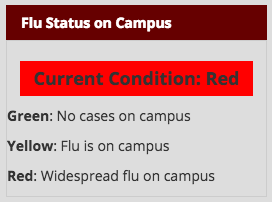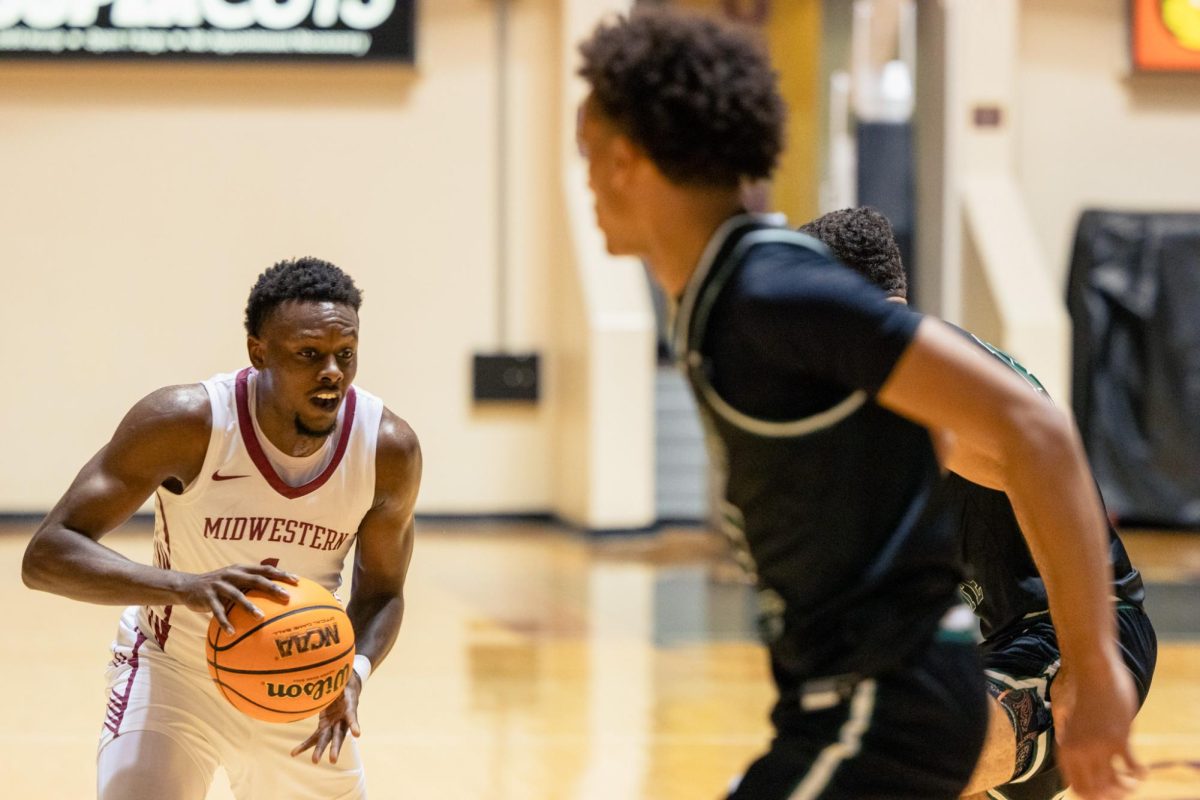
As Christmas trees and menorahs began to fade from shop displays and mall windows, the scarlet, heart-shaped candy boxes found their way at the forefront of every aisle marked seasonal in preparation for the festival of romance — Valentine’s Day. Though over-sized teddy bears and scarlet roses are gifts of choice for many on campus, there was one gift that just kept on giving.
Nothing says romance like the influenza virus.
“It got to a point I was seeing at least seven people a day with the symptoms,” Keith Williamson, medical director, said. “The [Centers for Disease Control and Prevention] has Texas marked as widespread, high levels of flu activity. My experience through the end of last week supports that.”
However, the Vinson Health Center wasn’t the only area on campus that experienced the impact of flu activity. Students — and instructors — were unable to attend to class.
“I had one of my classes cancelled for an entire week because my professor got sick,” Haley Kelley, freshman theater major, said. “It’s one thing when a couple of students get sick, but when your professor gets sick, then it gets a little more concerning.”
Williamson said despite a late start, it’s a fairly normal flu season.
“We get this every year,” he said. “It is predictable. I would say this year is a little later than usual, though it marks pretty well with the average time of year that we see these things. Of course, the more severe case would be the black condition. That was a level described in our 2009 pre-planning for the anticipated H1N1 epidemic. Of course, it’s not just how many people are affected, but how severe the flu is. For us to even consider to even consider anything like a campus-wide closure, it would involve every level of administration, faculty, and healthcare coming together to say that we’re experiencing too many absences in student and staff to effectively sustain class. Now, if we had a 1917 type flu, we would be sending people home. That would be a reason to close campus. What we’re experiencing now is something we see every year.”
Though, the flu isn’t the only ailment running across campus. With students and faculty both reporting cases of bronchitis and seasonal allergies, some may find it difficult to distinguish between them.
“It gets pretty tricky,” Williamson said. “They all occur at the same time. We get allergies, asthma flares, colds, and influenza, all at the same time. Of course it can come down to clinical judgement, which is something I’ve spent years trying to develop, but it comes down to the basic symptoms. A case will occur as follows: sudden loss of energy followed by scratchy throat, body aches, headache and then the fever hits. Within the next 24 hours, the cough will usually start. The three fundamental characteristics of flu are high fever, cough, and body aches.”
Williamson said it’s important to practice social distance in close spaces such as dorm rooms if one of the occupants has contracted the flu.
“Don’t share things,” he laughed. “It just comes down to the fact that it’s a respiratory virus that’s highly infectious and you have to be careful otherwise you will get it. Overall though, I suspect we’ve gone through the peak. In an average year’s experience, I say it’s probably burned out. Those who are going to get it have gotten it, and it’s just not going to find enough ‘fertile soil’ to grow in.”
READ MORE
Centers for Disease Control and Prevention: Flu Season














